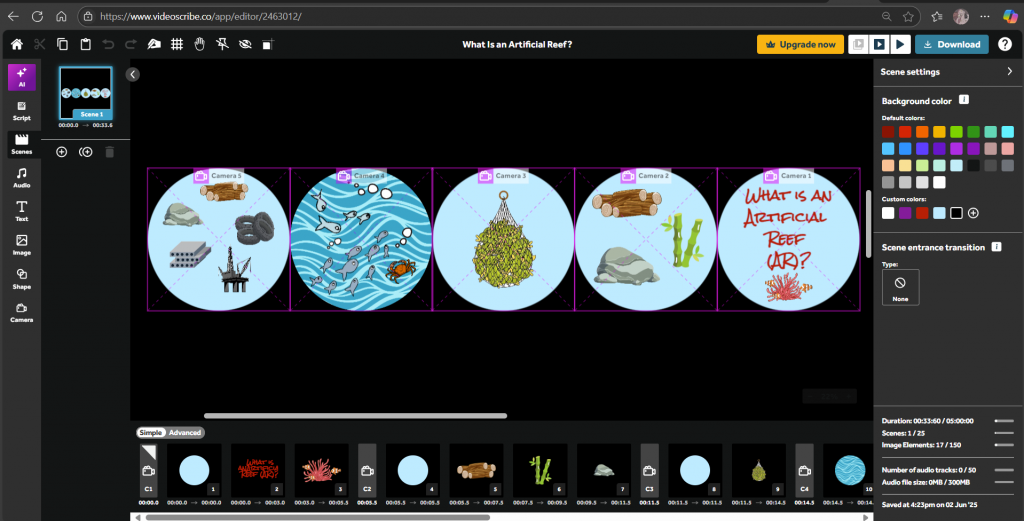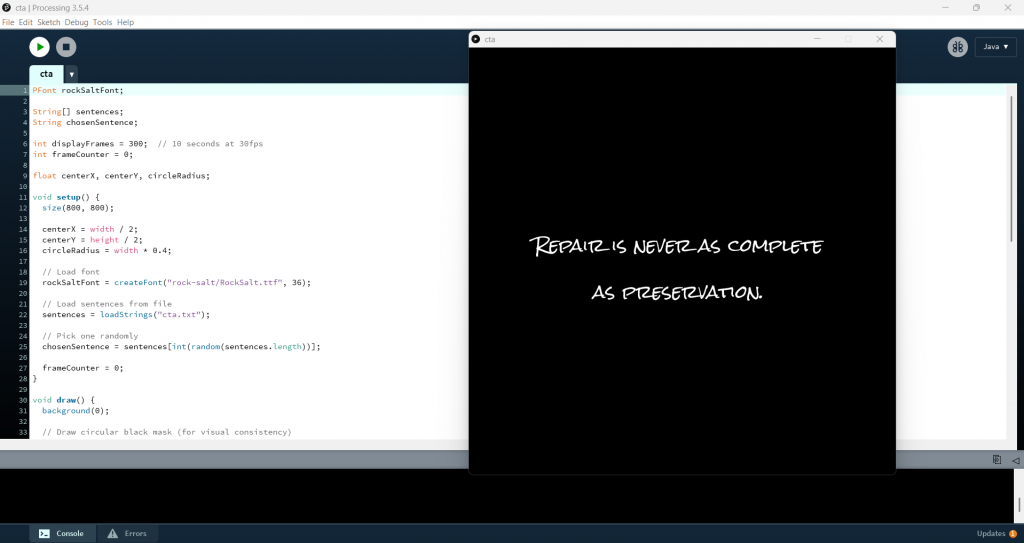Digital Content Creation (Intro to ARs & CTA)
This week I focused on developing the videos for my installation. The introduction screen titled What Is an Artificial Reef?, and the last CTA video.
Screen 1: What is an artificial reef (AR)
I wanted the first screen to set the stage: to explain, simply and engagingly, what ARs are, where they came from, and why they matter. I didn’t want it to feel like a dry educational lecture, but something to draw people in, spark their curiosity, and make them want to learn more. So, I chose to use VideoScribe to create the animation. I’ve never used it before, but I really liked its hand-drawn style — I thought it could help make the content feel more lively and playful.
I followed the storyboard we planned: the animation opens with the question, What is an artificial reef? I wanted to immediately invite the audience to wonder, not just tell them. From there, the video moves into a brief history, showing how early artificial reefs were created using simple, available materials like bamboo, stones, and wood — mostly to improve fish-catching.
Then how this practice has transformed over time, evolving into a more deliberate environmental technology aimed at marine restoration. I listed some modern materials used today, like concrete, steel, and even sculptures — which are designed specifically to attract marine life and help rebuild damaged ecosystems.
It was challenging to fit all this information into such a short, clear visual flow, but I’m happy with how it’s coming together.

Screen 4: Call-to-Action
code: https://git.arts.ac.uk/21020295/Reeflection/tree/main/DigitalContent
To wrap up the series of artificial reef visualizations, I wanted to create a simple but striking Call-to-Action (CTA) screen. This final animation delivers an important message by randomly displaying a short sentence (like a conservation message or call for awareness) in a bold, visually centered way.
Here’s how the animation works:
Randomly Selected Sentence:
The CTA messages are stored in a simple .txt file (one sentence per line). Each time the program runs, it randomly selects one sentence from this list — ensuring variety and surprise with each viewing.
Custom Font (Rock Salt):
To keep the consistancy in fonts, I used the Rock Salt font, which is the same as the font I choose in VideoScribe. This adds personality and draws attention compared to a generic system font.
Center-Aligned Multi-Line Text:
Since some sentences are longer than others, the animation intelligently wraps long sentences into multiple lines. I wrote a custom function that calculates how to split the sentence into lines that fit within the circle’s width, then centers the entire block both horizontally and vertically. This ensures that no matter the length of the message, it looks balanced and aligned inside the circular space.
Timing:
The message stays visible for 10 seconds, giving viewers enough time to read and absorb it without rushing. After that, the screen fades back to blank, creating a clean, meditative ending.

Reeflection
There were definitely a few frustrating moments — like when the software didn’t do exactly what I wanted, or when a section just didn’t feel smooth. But overall, this part of the project really energised me. Seeing the screens come to life made the whole installation feel more real.
Next week, I’ll dive into developing the data visualisations for the successful and failed reef cases. I know it’s going to be technically tricky, but I’m excited to experiment and see how I can translate these stories into moving, meaningful visuals.
Leave a Reply